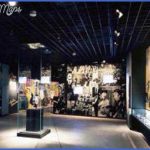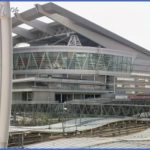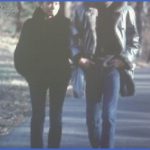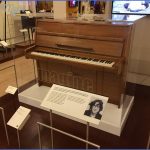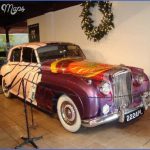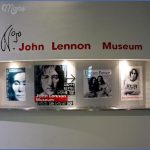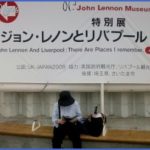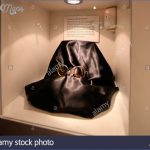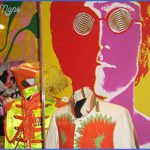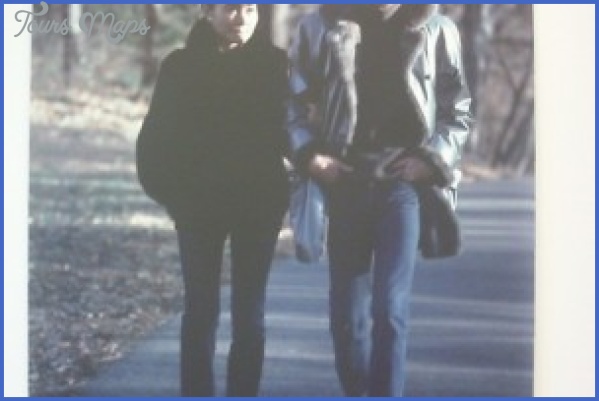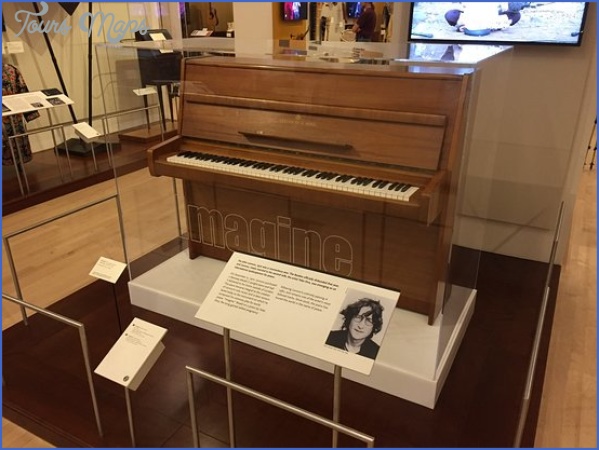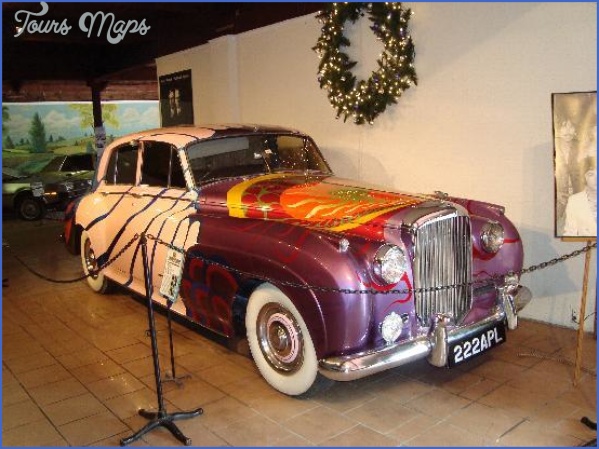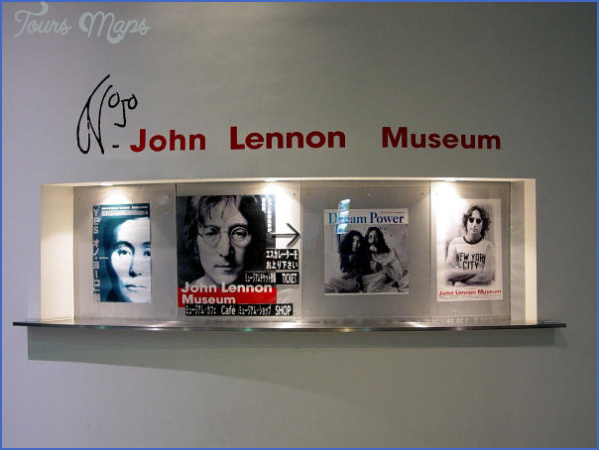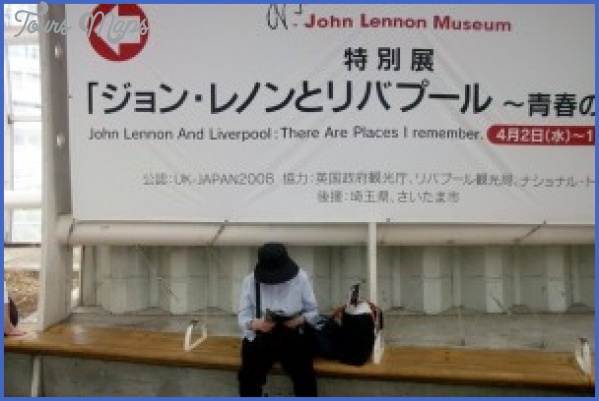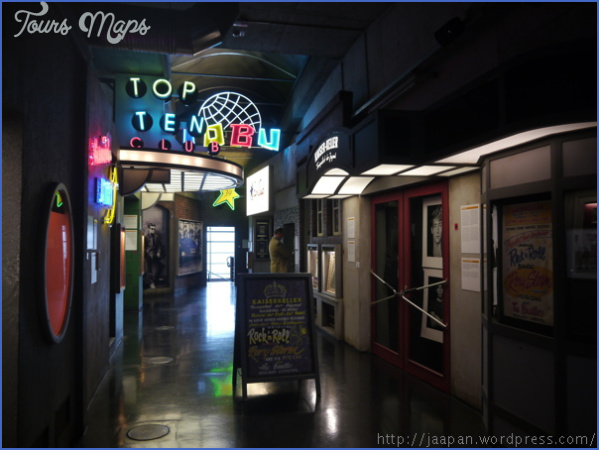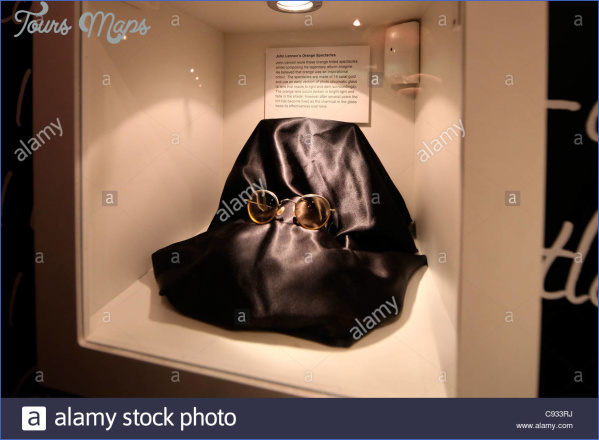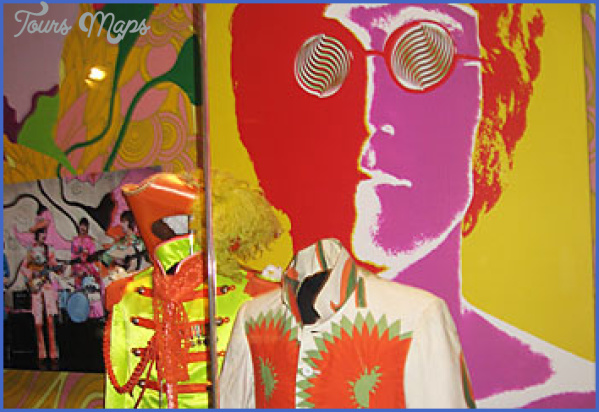LENNON MUSEUM
It is impossible to visit Liverpool without being reminded of its connection with the Beatles. Arriving by air, you land at John Lennon Airport (so named in 1993), whose slogan ‘above us only sky’ is a quotation from Lennon’s Imagine (1970). The airport sports a statue of the Beatle and a Cavern Suite. In the city centre, the Mathew Street area of the legendary Cavern Club was much ‘restored’ in 1984, to the extent that the Cavern Club is no longer in the same building. Guidebooks to the Beatles’ Liverpool are available everywhere, along with an endless array of Beatles souvenirs equalled only by Salzburg’s relentless promotion of its connection with Mozart. Beatles coach tours regularly depart from a car park in the Albert Dock area, where one can also tour ‘The Beatles Story’, which opened in 1990 and incorporates an evocation of Lennon’s New York apartment. If you stop in at HM Customs and Excise National Museum (part of the Merseyside Maritime Museum, also at the Albert Dock) you can see the ten gold discs awarded to the Beatles and their manager, Brian Epstein, for A Hard Day’s Night and Something New that were deemed appropriate for confiscation on the Beatles’ return from the USA in 1964.
Recently the National Trust acquired and restored the childhood homes of two Beatles, Paul McCartney (see MCCARTNEY) and John Lennon; they can be visited on a tour that begins at another local National Trust property, Speke Hall, close to the airport. Both are furnished much as they would have been in the 1950s when McCartney and Lennon lived there. One provides an example of council housing, the other of a more prosperous middle-class community whose residents could afford relatively spacious properties with gardens and such features as Mock Tudor trim, Art Nouveau stained-glass windows, Art Deco fireplaces and a bell system for summoning the maid.
LENNON MUSEUM Photo Gallery
John Lennon, born in London in 1940, was lovingly brought up by his Aunt Mimi and Uncle George in Liverpool, who were childless and evidently glad to take him on when in 1945 his mother Julia could no longer look after him. They lived in a comfortable 1933 three-bedroom, semidetached house in the southern suburb of Woolton, Mendips, in Menlove Avenue; McCartney remembers Lennon’s aunt’s house as ‘posh’.
In 1955 Lennon acquired a guitar, taught himself to play and formed a skiffle group, the Quarry Men (their school was Quarry Bank High). He left school in 1957 to go to Liverpool College ofArt; that summer he and McCartney became friends and fellow Quarry Men. Like McCartney, he lost his mother, who died in a road accident in front of Mimi’s house in 1958. The Quarry Men became the Beatles in 1960 and had their first ‘gig’ at the Cavern the following February. Lennon and his school sweetheart Cynthia married in 1962. When in 1965 Aunt Mimi, a widow since 1955, sold Mendips and went to live in Dorset, Beatlemania was spreading throughout the world.
Mendips remained privately owned. On the 20th anniversary of Lennon’s death, in 2000, it acquired a blue English Heritage commemorative plaque. Lennon’s widow, Yoko Ono, bought it in 2002 and gave it to the National Trust. Its restoration was achieved with the help of family photographs and donations of furniture and other items that once belonged to Mimi, along with others typical of the early 1960s, supported by the reminiscences of those who had known Lennon as a child, his aunt and uncle, and watched over by Ono.
Of particular interest is the re-creation of Lennon’s tiny bedroom – not much larger than the bathroom – above the front door. Every object on display there has relevance: the period furniture and furnishings, the wall posters of Elvis Presley, Rita Hayworth and Brigitte Bardot, copies of the childhood books that find reflection in his later songs, the school cap, the wireless, the 45 singles and the modest guitar. When he and McCartney wanted to experiment on their guitars – neither read music – they were obliged to decamp to the enclosed front porch with its paradoxically resonant acoustic, or they cycled over to McCartney’s house in Allerton. The other rooms give context and fresh meaning to the anecdotes and surviving photographs. 251 Menlove Avenue was opened to the public in 2003.
The story of John Lennon’s adult life is rehearsed in exhaustive detail in the several Beatles museums that have sprung up, not only in Liverpool but abroad, especially in Germany, which rely on recordings, photographic reproductions and collections of memorabilia (see McCartney for further information). The Beatles Museum in Halle displays on a velvet cushion a spoon said to have been Lennon’s, rather like a sacred relic; elsewhere in the museum Lennon’s erotic lithographs of Yoko Ono and himself and copies of his animal cartoons are also exhibited. While focussing on the 1960s, these museums also follow the individual band members through the post-Beatles era to the present, which for Lennon ended when he was assassinated outside the Dakota Building at West 72nd Street in New York City on 8 December 1980.
His widow still lives in New York, in one of the Lennons’ Dakota Building apartments. Directly below and across 8th Avenue in Central Park is the Strawberry Fields memorial garden which she instigated, named after the Salvation Army orphanage near Mendips made famous in the 1966 Lennon-McCartney song Strawberry Fields Forever.
There is another perspective on offer at the John Lennon Museum in Tokyo, which opened on his 60th birthday. At 2-27 Kamiochiai, Saitama-City, it occupies the 4th and 5th floors of the Super Arena. Three zones are devoted to Lennon’s childhood and the Beatles era and six document his life with Yoko Ono between 1966 and 1980.
Maybe You Like Them Too
- Top 10 Islands You Can Buy
- Top 10 Underrated Asian Cities 2023
- Top 10 Reasons Upsizing Will Be a Huge Travel Trend
- Top 10 Scuba Diving Destinations
- World’s 10 Best Places To Visit

